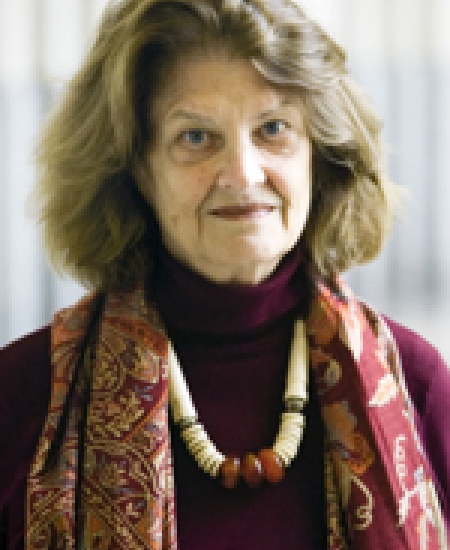Two days last month I got up at 4 a.m. to attend the Fourth International Feminist Conference in Spain. Why so early? Because I participated via my computer in Washington, six hours behind Madrid time, thanks to live-streaming on Webislam. One can only imagine in how many time zones others were also coming on board. Interacting in cyber and real space has been the hallmark of Islamic feminism since it first burst on the global scene some two decades ago.
The Roots of Islamic Feminism
Islamic feminism articulates an egalitarian Islam rooted in a Qur’anic ethos. It unmasks the inequalities and injustices that patriarchal thinking and practices perpetuate in the name of Islam—or as “Islam” pure and simple—as antithetical to the principles or objectives (maqasid) of the religion. From the start Islamic feminism has been a knowledge-making project—knowledge that carries s moral imperative for application. It is produced by religiously-oriented scholars and thinkers, mostly but not only women, concerned with gender equality and justice going to the Qur’an and other religious texts to take a critical look for themselves in a process known as ijtihad. They came from diverse social and cultural locations and brought to the task questions arising from their own experiences. Islamic feminism unites analysis of text and context.
Islamic feminism surfaced as a new discourse in different parts of the globe—from Morocco to Malaysia and from America to South Africa—in the 1990s. The rise of Islamic feminism coincided with the spread of Internet connectivity. Islamic feminism circulated rapidly in cyberspace and instantaneously resonated among Muslims and many non-Muslims impatient for equality and justice for themselves and others. It emerged at a moment of patriarchal resurgence pushed by Islamism or political Islam, and it was intent upon breaking through the barricades of the tired old binaries of East/West, public/private, secular/religious, and male/female that Islamism was busy re-enforcing.
While produced by Muslims, Islamic feminism is a discursive position that anyone can engage irrespective of religious affiliation. Islamic feminism is a voice that can be raised in a harmonious call with other voices demanding the practice of human rights and democracy in the multiple on-the-ground inter-connected struggles underway in many countries. Islamic feminism demonstrates the power and potential of the transnational and trans-communal work needed in the 21st century.
The Spanish Connection
The recent conference in Madrid is a prime example of this inter-connectivity. It was Spanish Muslims, mainly converts, who convened the very first International Feminist Conference. The Junta Islamica of Catalonia organized this path-breaking event in 2005 in Barcelona, which was to be the home of the next two Islamic feminist conferences. The organizers of the initial conference—two decades into the spread of Islamic feminism—were eager to provide a venue where people could gather and examine the big picture and constituent parts. The conference—both panorama and kaleidoscope—displayed the dynamism and diversity that is the hallmark of Islamic feminism. The conference, which drew Islamic feminists, Muslim and non-Muslim secular feminists, a wide swath of women of diverse backgrounds, as well as a good number of men, created a new transnational community of individuals, many of whom participated in subsequent conferences and remained in contact through other means.
Spain is a powerful symbolic site of Islamic feminism. Spanish Islamic feminism exemplifies the dissolution of the East/West binary. As poet, writer, and a lead organizer of the conferences, Abdennur Prado, emphasizes, the Islamic feminist narrative in Spain draws from two sources. One is the gender-progressive interpretation of the Qur’an articulated by the new exegetes within the global umma or Muslim community. The other is the enlightened scholarly, intellectual, and artistic tradition of a past in which Spain was at the center of learning in Europe and Spain was home to Muslims, Christians, and Jews. It was a time when a rich tapestry of many threads and colors was being woven.
The early years of Islamic feminism coincided with a signal event in Spain. In 1992 the Junta Islamica signed an accord with the Government of Spain officially allowing Islam to be freely practiced in public for the first time since the final expulsion of the Muslims five hundred years earlier. The Junta Islamic of Catalonia as just noted arranged the first international feminist conference. The Junta Islamic of Spain—founded and headed by a strong proponent of Islamic feminism, Mansur Escudero, who died three weeks before the Madrid conference—upholds “universal spiritual values in harmony with modernity and democracy.”
In the wider looping and networking effect characterizing Islamic feminism, Islamic feminists in Spain, as elsewhere, draw upon the global Islamic feminist discourse while simultaneously contributing to its articulation. When Amina Wadud—well-known voice of Islamic feminism and author of Qur’an and Woman (1991)—drew heavy fire (including a condemnatory fatwa from Saudi Arabia) for serving as an imam leading women and men in congregational prayer in March 2005, Prado pointed to two Andalusians, Ibn Rushd (known in the West as Averroes) and Ibn Arabi who had supported the case of women imams back in the 11th and 12th centuries. At the recent Madrid conference, professor of religious studies Sa’diyya Shaikh from South Africa, in a presentation titled “Ibn Arabi, Gender and the ‘Greater Jihad,’” shared the profound humanist and mystical insights of a great Spanish Sufi with her audience.
Islamic feminism is a work in progress. It is fed by and feeds many streams. Textually and contextually grounded, it is fluid, dynamic, and responsive to contemporary demands for equality and justice. Islamic feminism shows how we can retain and at the same time transcend our communal, cultural, and national distinctiveness. It also shows how we can share, give, and take in the course of navigating across spaces and time zones, building an array of complex, gender-sensitive modernities.


One thought on “Islamic Feminism in Spain and Beyond”